Embarking on a hiring journey in the tech world, especially remotely, presented a unique set of challenges. Picture this: It’s 2022, SaaS was booming, remote work was the norm and the competition was fierce. Our startup, still in its infancy with little virtual presence, faced the daunting task of not just finding talent but finding the right talent in a sea of competitors.
Our CEO’s vision translated to our hiring goals:
Create three pioneer cross-functional squads to build and maintain different parts of the product.
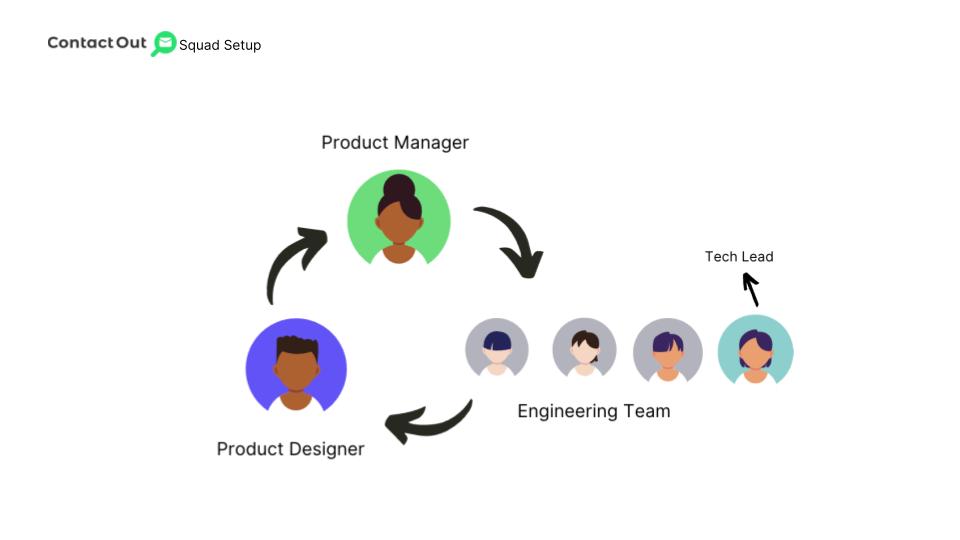
Those were the toughest yet most exciting times in ContactOut. We had a flurry of activity, averaging over 20 interviews a week.
Here’s how we did it and some of our reflections along the way:
Identified core needs. What does “good” look like?
| What was the business problem we were trying to solve?
We’ve got a promising product, but the UI/UX wasn’t great. We wanted to build more intuitive features in different parts of the platform to add value to our users and attract new customers. What’s our tech stack?
Educational background:
Qualifications, both technical and functional
|
Initiate candidate benchmarking: what do these successful candidates have in common?
While technical prowess is desirable, it doesn’t always guarantee success. There has to be a fine balance between skills and attributes. I’ve learnt this the hard way – multiple times.
The good news was that we didn’t have to look far to understand what a successful engineering talent looked like — our own team provided the blueprint. We analyzed profiles of our team members who thrived in our environment and mirrored these qualities in our hiring process.
Here’s our first profile:
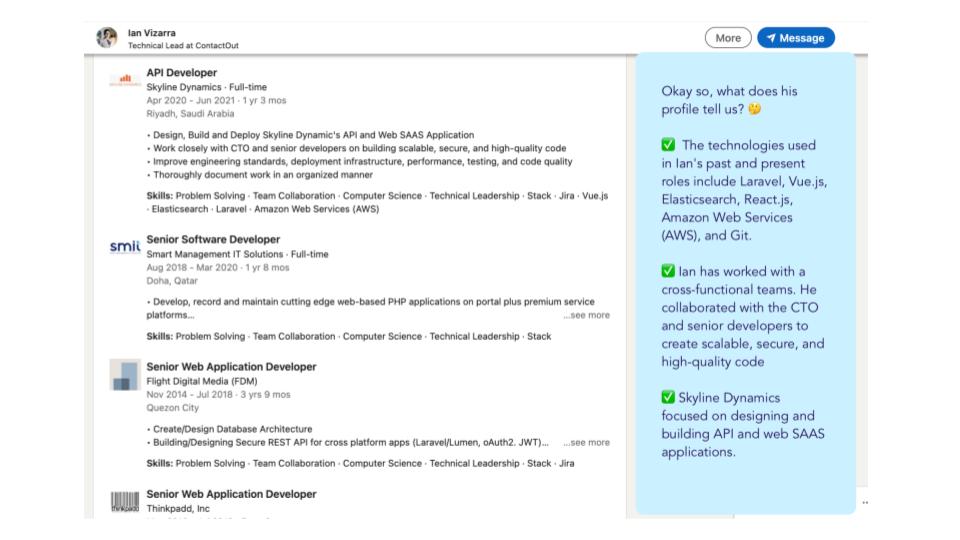
Let’s look at another one:
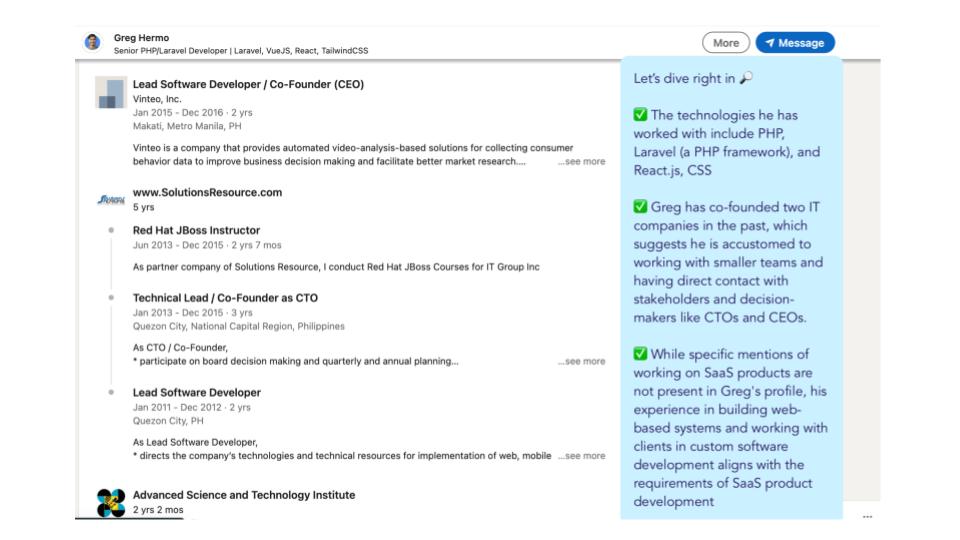
Last one:

Now that we have identified commonalities, we can start building our attributes:
- Problem-solving skills – we sought individuals who embraced challenges, recognizing that solutions are not always in the playbook in a startup.
- Effective communication – overcommunication was key, especially in a remote setup. We needed individuals who could effectively collaborate across various teams and geographies.
- Has a continuous learning mindset – we value a mindset geared towards constant learning, evident in candidates who engaged in the community, pursued passion projects, or demonstrated consistent career growth.
- Leadership skills coupled with a can-do attitude – the ability to guide teams, especially in a remote environment, was crucial. This trait fostered trust and accountability within teams
Sourcing – where and how do we find these talents?
The beauty of remote work is that you can hire without borders. This allowed us to look for talent across Asia. That’s exactly what we did. We scoured talent and focused on Malaysia, India and The Philippines. If you were wondering why, our existing team already works in these locations and time zones.
My go-to for sourcing is ContactOut, a contact-finding platform that scours through vast databases and filters candidates based on set parameters.
I use ContactOut in two different ways:
The first one is by doing a classic Boolean search into Google to find software engineers that meet our qualifications > head to their LinkedIn > use ContactOut to get in touch with them.
For the purpose of this search, I used this search string, which generated 121 results:
“tech lead” OR “senior developer” OR “team leader” “(React” OR “reactjs” AND “laravel)” AND “saas” -“contactout” -intitle:”profiles” -inurl:”dir/ ” site:ph.linkedin.com/in/ OR site:ph.linkedin.com/pub/

TIP: You can also try out different search strings, depending on your intent. In this case, removing “tech lead” and “tech leader” from my search string got over 176 results:
“software engineer” “(React” OR “reactjs” AND “laravel)” AND “saas” -intitle:”profiles” -inurl:”dir/ ” site:ph.linkedin.com/in/ OR site:ph.linkedin.com/pub/ -contactout
Now that we’ve got a sizeable pool of talent, let’s check out their experience and how it compares to our candidate benchmark.
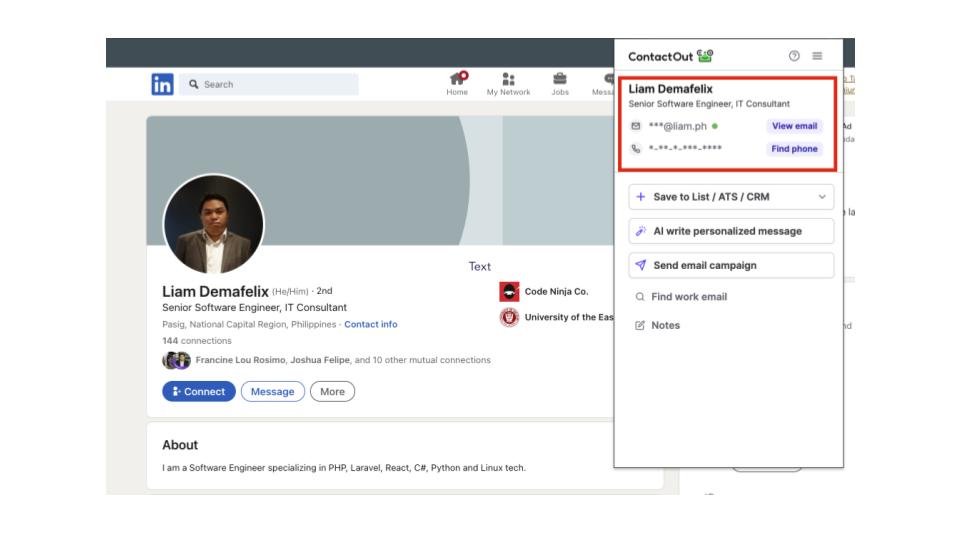
This candidate possesses enough relevant experience and attributes for us to reach out, specifically:
- Expertise in Laravel and React, matching the persona’s requirement for diverse technical skills.
- Notable role as a Technical Lead and Senior Software Engineer with experience in DevOps (AWS, CI/CD) also aligns well with the persona.
- Experience in leading code review sessions, sprint planning, and agile development processes, which aligns with the leadership qualities
- Involvement in meetings with company owners for team updates shows his capability in stakeholder management and effective communication.
- Eudcation-wise, Liam holds a Bachelor’s degree in Information Technology, aligning with the persona’s requirement for a solid educational background in a relevant field.
- Familiar with the nuances of a remote working environment (Code Ninja Co.)
The second way I use Contactout is through its own search portal. I use these handy filters and adjust my search depending on the results, extract the information I need, and send them our outreach message. This leads me to the next stage: the Undercover Outreach Method (U.O.M.)
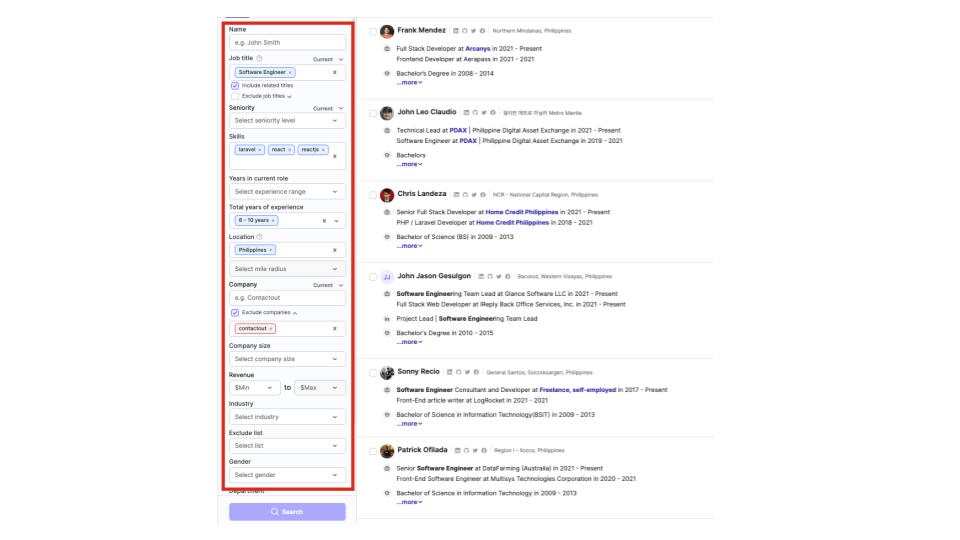
How do we reach out to these talents? Introducing: The Undercover Outreach Method (U.O.M.)
Finding talent is half the battle – getting their attention in a world where their inbox is brimming with opportunities is another hurdle. This leads me to our go-to method for standing out in a sea of emails: a personalized approach, where our leaders actively “reach out” to potential candidates while recruiters manage the back end (e.g. responding to emails, screening profiles, and arranging interviews)
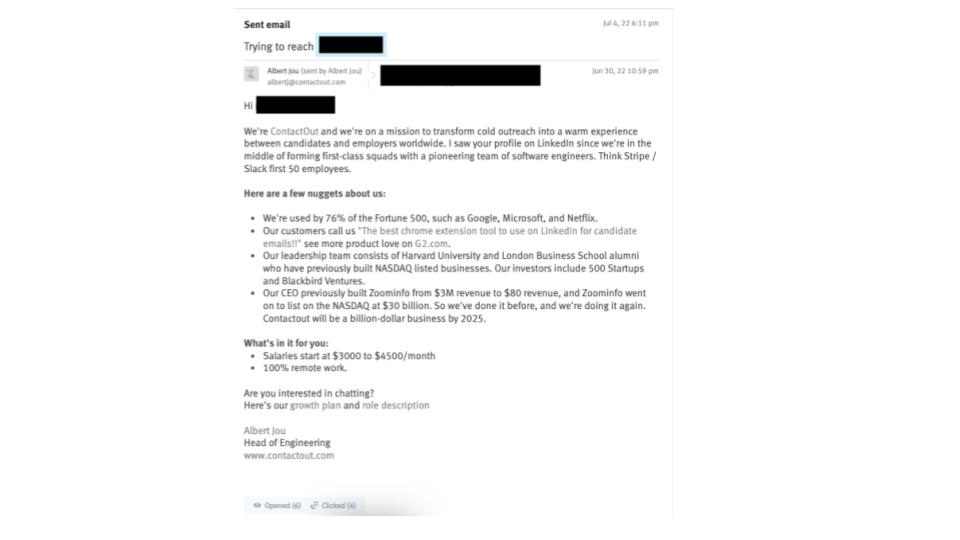
While this method is nothing new, it does generate a boatload of engagement that kept our calendars full and our activities filled with conversations for weeks on end.
Sometimes, you don’t have to reinvent the wheel.

The Recruitment Process: How do we strike a balance?
The gruelling part was really in the technical and functional assessments. It required time and effort, both from the candidates and interviewers alike. Finding the balance between quality and speed was always a learning process.
We divided ours into three parts:
- Technical evaluation (coding challenge)
- Questions focused on value-add
- Final video interview with the Head of Engineering
Our technical evaluation involved sending a take-home coding challenge that allow candidates to demonstrate their technical skills at their own pace.
We each gave our reviewers scorecards to evaluate all submissions fairly. This approach also helped mitigate unconscious bias, ensuring candidates were assessed purely on their skills at the first stage.
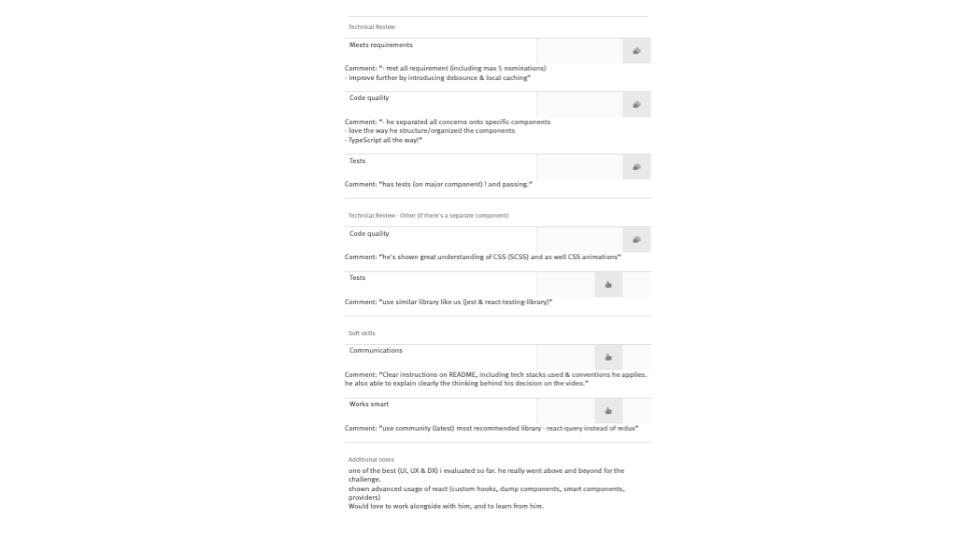
TIP – Share the criteria with your candidates to level the playing field. What a “good submission” looks like for them may not look the same for the organization. This helps keep everyone aligned.
Value-add focused questionnaire: These questions are designed to delve deeper into the candidate’s personal and professional attributes, aligning with the key aspects of the candidate persona we established.
What were these questions and why did we ask them?
Question 1: What’s the most impressive thing you’ve accomplished in your life/career?
This question aims to uncover the candidate’s significant achievements, which can indicate their level of expertise, problem-solving skills, and dedication.
Question 2: How many books did you read last year, and what did you learn from them? (podcasts, articles, or webinars are good too)
This question assesses the candidate’s commitment to continuous learning and self-improvement. It also gives insight into their intellectual curiosity and areas of interest.
Question 3: What are your values?
Understanding a candidate’s values is crucial to determine if they align with the company culture and the persona’s emphasis on teamwork, leadership, and problem-solving approach.
Notice how we didn’t inject our own values but asked for theirs and see how it adds value to our own team.
Question 4: Tell us about a project you worked on where you delivered ahead of time, what was the business outcome and how did you achieve that?
This question is designed to evaluate the candidate’s project management and execution skills. It also sheds light on their ability to drive positive business outcomes, a key aspect of the persona.
Question 5: Tell us about something you find very difficult in your current role?
This question helps to understand the candidate’s self-awareness and how they handle challenges. It’s important to see if they have the resilience and problem-solving skills given that we’re working with distributed teams.
Final Video Interview: Candidates get to meet with our Head of Engineering. This stage provides further insight into the candidates’ technical capabilities, communication skills in real-time, and future growth potential before making a decision.
TIP – set regular cadences with your hiring manager to swiftly capture any movements/changes in the role.
The end result: Three product squads, each with their dedicated group of engineers, built in a year.
Each cross-functional team, with its unique skill sets and qualities, contributed significantly to our product development and organizational growth.

What did we learn along the way?
- Hiring is a collective effort between hiring managers, interviewers and recruiters. It’s what led us to hire with both speed and efficiency.
- In a startup, your team is your greatest asset. They can speak about the culture and promise of growth more than anyone else. Leverage those in your outreach so you can stand out from their inbox.
- Iterating is important – having a process that works well requires trial and error. There will be mistakes. Lots of them. You have to be ready to dust yourself off, pick yourself back up, and give yourself room to make those mistakes, accept them, and learn from them.
Enjoyed reading? Good news – this article is the first in a series of three.
Continue the journey with How ContactOut Built 3 Pioneer Squads in One Year ft. Our Product Management Team and How ContactOut Built 3 Pioneer Squads in One Year ft. Our Product Design Team













